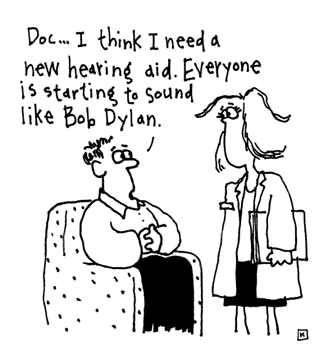Adult-onset hearing loss affects millions of Americans and accounts
for a huge economic burden in our country. There are two major forms
of hearing loss – “sensory / neural” and “conductive”. Sensorineural
hearing loss is caused by injury to the acoustic nerve or the cochlea.
These injuries can be from noise damage, viruses, meningitis, and of
course the slow degeneration of aging. Conductive hearing loss is
most commonly from an earwax impaction, fluid behind the ear drum,
infections, or a type of ear scarring called otosclerosis.
A hearing test is a brief painless test battery performed by an
audiologist to determine what your hearing level is, how it compares
to normals, and what type of hearing loss you may have. This, as well
as a microscopic examination of the ear and eardrum will allow the
physician to make recommendations about improving your hearing.
Wax removal, antibiotics, steroids, minor procedures, and sometimes
MRI scans can be useful in sorting out the hearing loss. An
electrical hearing test, called an ABR, is often helpful as well,
especially in young children.
Sometimes the only option for improving hearing are hearing aids.
These have gotten much smaller and much more advanced over the past
decade. The smallest of which are now the size of a large pencil
eraser and are completely hidden in the ear canal. Your physician and
audiologist can make recommendations about which type and size of
hearing aid may be best for you.

